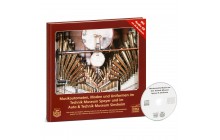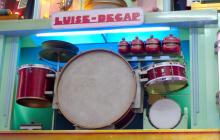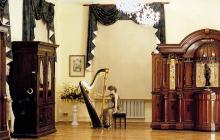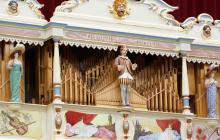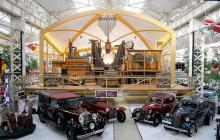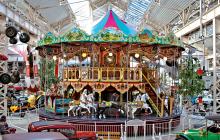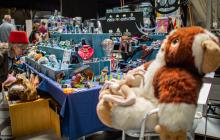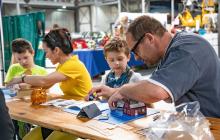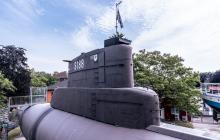Flute-playing instruments and clocks
The first devices that, in a wide sense, can be considered automatic musical instruments were the musical movements built into clocks. Initially, they were chimes or psaltery-related harp clocks. But because of their limited range of sound these instruments could only play very simple melodies. In the 18th century, seinettes, also referred to as “bird organs”, became quite popular. Amongst other things they were used to teach canaries to sing. An example from the Museum Wilhelmsbau is shown in the picture.
Serinettes are already equipped with all parts which make up an automatic musical instrument: a drive (hand crank), a sound carrier (pinned barrel), and sound cources (pipes). The hand crank drives both the barrel and the pump. The pinned barrel is sensed by small levers which are attached to valves. If a lever is raised by a pin, the valve opens and compressed air streams into the corresponding pipe.
Refinement of this principle finally led to the development of flute-playing clocks which were driven by weights and had a clockwork with additional flute pipes. Reproduction of melodies was more and more perfected by improving the pinned barrels and had a clockwork with additional flute pipes. Reproduction of melodies was more and more perfected by improving the pinned barrels and the sensing mechanism. Even famous composers like Mozart, Haydn, Händel or Beethoven wrote music especially for flute-playing clocks. The most valuable masterpieces could be found in the castles of emperors and kings. Frederick the Great and Napoleon both were enthusiastic collectors of flute-playing clocks. This early from of automatic musical instruments is also represented in the Wilhelmsbau. The picture on the opposite page shows the “Clock Cabinet” where many valuable originals are on display.

